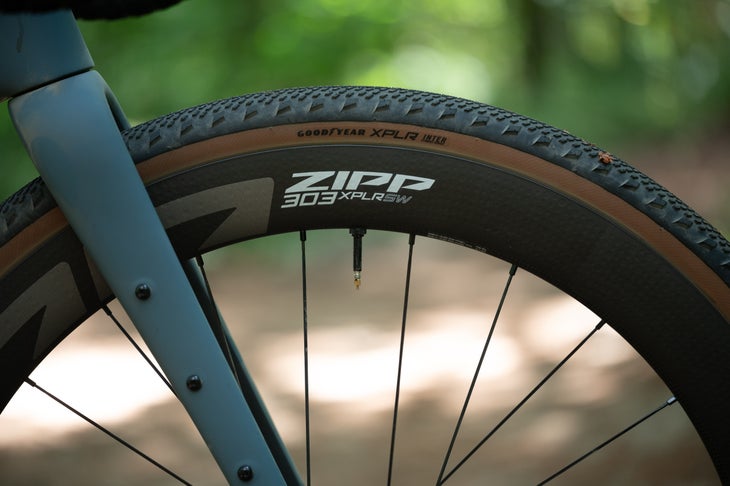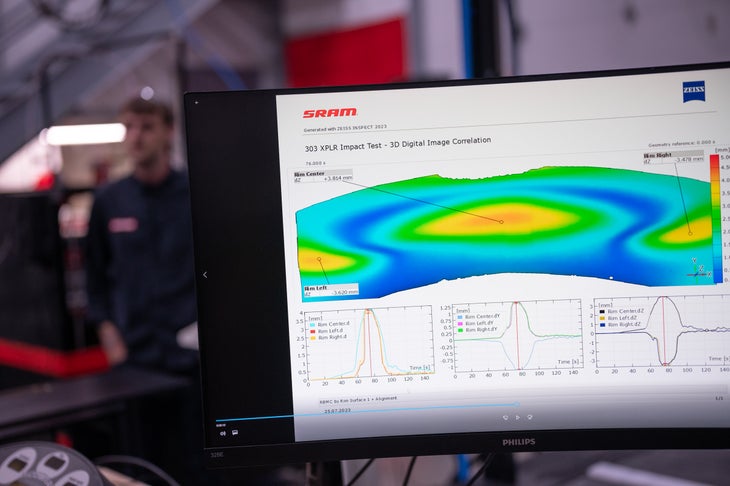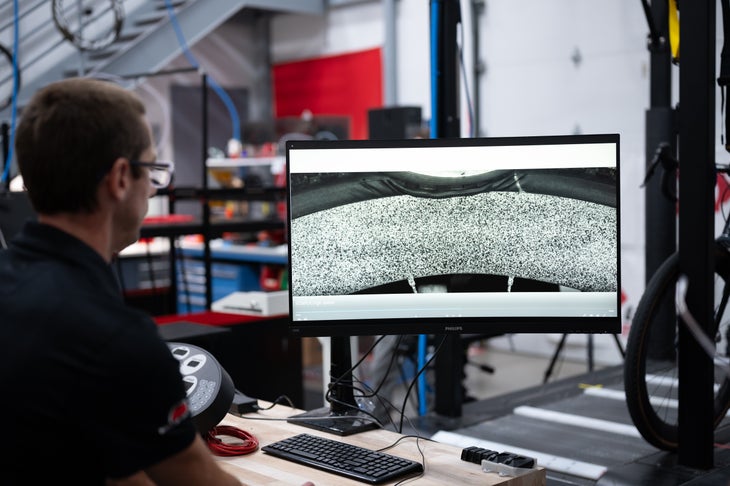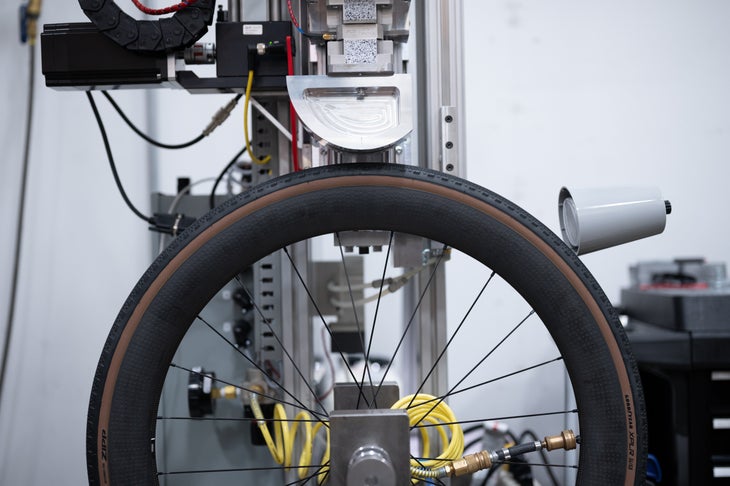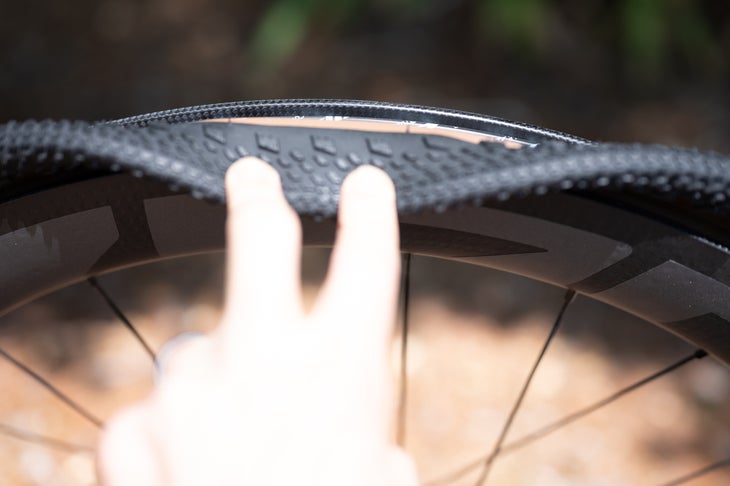Before today, Zipp had an odd lineup of gravel options filling out our component reviews. The top-tier wheel was the Zipp 353 NSW road wheel that happened to have a 25mm internal width and the budget option was the 303 S with a 23 mm internal width. The 303 Firecrest wheel that most people considered the go-to gravel option wasn’t as deep as the budget option and it was technically a second tier wheel. That might not matter that much but it led to weird pairings on premium bikes. In short, Zipp gravel wheels didn’t hold up to the competition. Today, that changes with the release of the ZIPP 303 XPLR SW and ZIPP 303 XPLR S.
The ZIPP 303 XPLR SW is an aero focused gravel wheel unlike anything else on the market. The ZIPP 303 XPLR S is the same wheel with added weight and a lower price. Both options focus on a combination of aero performance and vibration losses through a wider, deeper profile than the competition. If fast gravel is your focus, read on. Here are my thoughts after spending time riding a set of wheels that are unlike anything else.
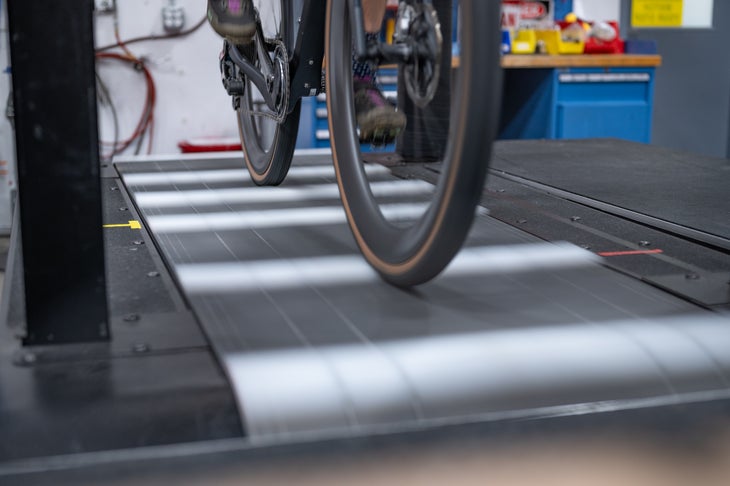
Quick hits: nine things to know about the ZIPP 303 XPLR SW
- Internal width is 32 mm (28 percent wider than the current standard)
- 54 mm depth with Zipp aero “dots” and a max 40mm external width
- 3.9 mm sidewall is 77 percent thicker than previous 303 Firecrest
- 1,496 g with valves and tape
- 1-3 watt power savings at everyday speeds (12-20mph)
- Aero optimized for a 40 mm tire and losses are minimal with 45 mm
- Uses a Zipp ZR1 hub with 66-points of engagement and J-pull spokes
- Same lifetime warranty as other Zipp wheels
- Launching with Goodyear XPLR 40c “Slick” and 45c Inter tires but also compatible with other tires including all Schwalbe G-One tires 40 mm and above
- Visit the SRAM XPLR website for more information and to purchase
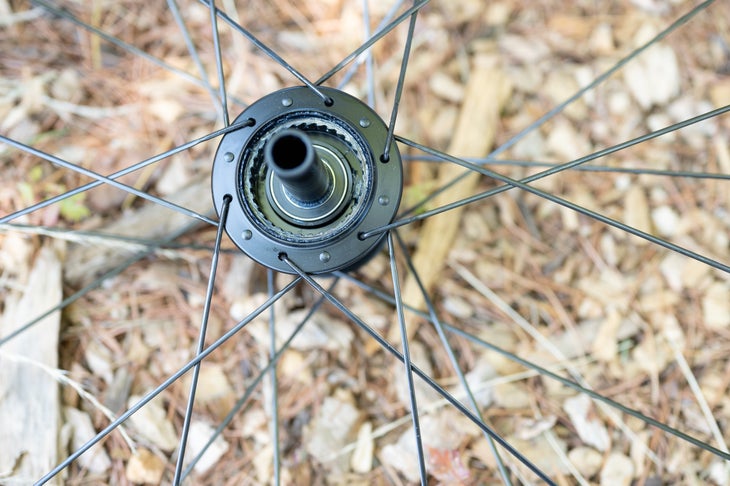
ZIPP 303 XPLR SW details
The Zipp 303 XPLR SW wheelset is hitting the market along with, and in some ways part of, the 2024 SRAM RED XPLR AXS 1×13 gravel groupset. If you want to read more about that whole system, check out the review. This article covers the wheels.
You don’t need to run a SRAM groupset to use them. There are freehubs available for XDR, SRAM/Shimano, Microspline, and Campagnolo N3W letting you pick whatever you need. With that out of the way, let’s dive into the wheels.
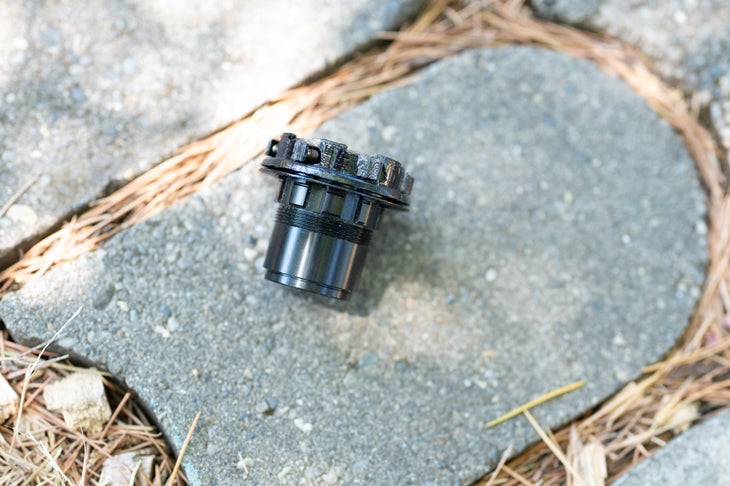
The story Zipp tells about the ZIPP 303 XPLR SW comes in two parts. The first is about aero efficiency and Zipp starts by explaining the problem with current gravel wheels and tires. It’s not a new story that’s unique to Zipp but rather a rehashing of exactly what every aero focused brand will tell you. Current wheel and tire combos present a mismatch between the size of the tire and the size of the wheel.
If you want to really understand this, look at most modern aero road wheels. The wheel to tire interface is almost seamless. No one is designing wheels in a vacuum anymore and modern road wheels consider the size and shape of the wheel and tire as a unit. The smoother the better.
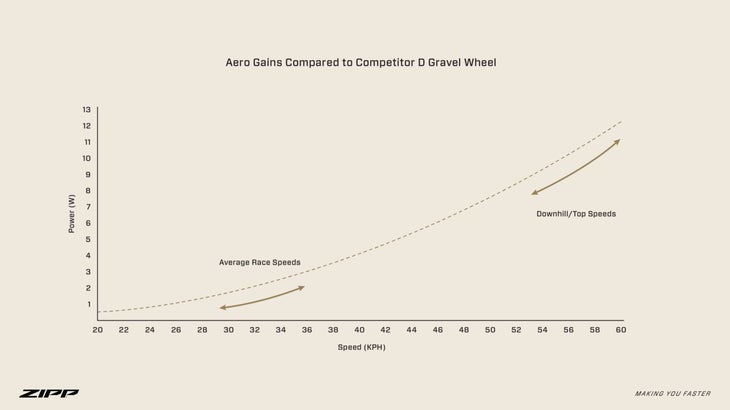
Then you get to gravel wheels and there’s a lightbulb effect. The tire presents as a tube then the wheel intersects with and completes the aero profile. For most brands, that’s the end of the story.
Not every brand falls into that camp though. There are some brands that are attempting to fix this mismatch. Hunt was maybe the first to address it with the 42 Limitless Aero Gravel wheel with a wide external profile. More recently there are a few smaller brands starting to address it by going to a 30mm wide internal profile.
The Zipp 303 XPLR SW wheelset goes even bigger. The current, informal, standard for gravel wheels is 25mm and the Zipp 303 XPLR SW comes to market with a 32mm internal width. That’s optimized for a 40 mm tire and I’m told at speeds in the 12-20 mph range you can expect a savings of 1-3 watts.
If that sounds low, it’s because the numbers you typically see are at higher speeds. I prefer the real world number though Zipp can also show 6-8 watts when moving faster. If you prefer bigger than 40 mm, there is also a 45mm tire available and I’m told aero losses are minimal.
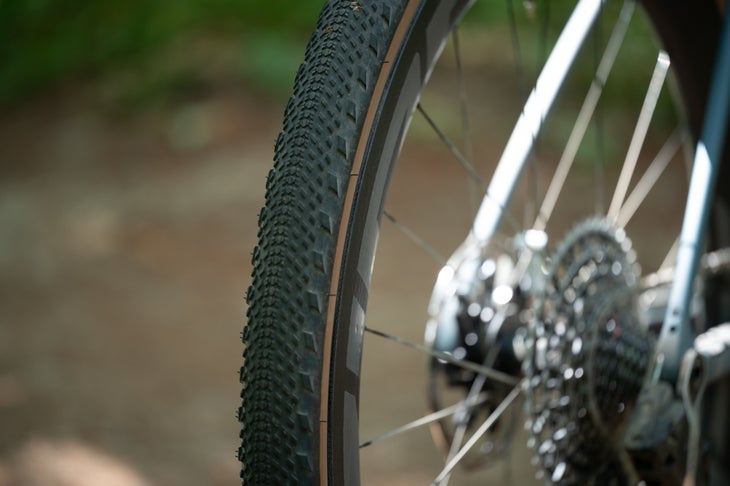
Speaking of tires, if you are wondering what tires I’m talking about, that’s the Goodyear XPLR Inter and Goodyear XPLR Slick. I reference those tires because when you drastically change the size of a wheel, it has an effect on the tire. ISO certifications don’t cover tires that small on hookless wheels that wide and, even if they did, strange things happen when you stretch the center of a tire. In some cases parts of the tire that a manufacturer expects will be the sidewall will now be part of the tread.
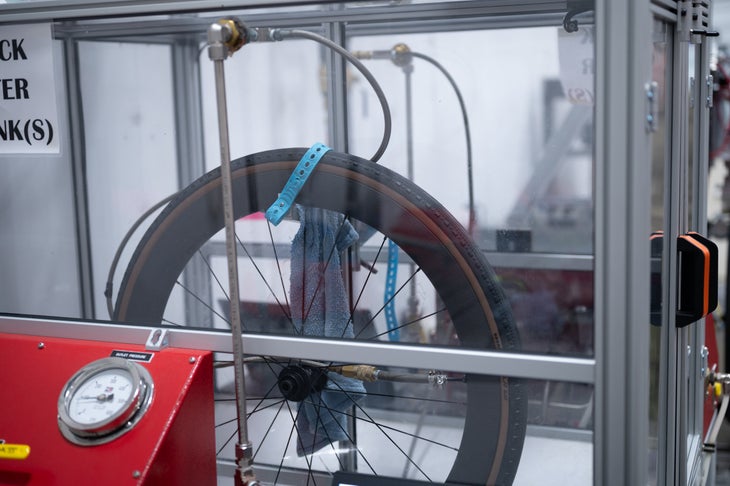
To solve the problems this presents, Zipp has tires to match. The Goodyear XPLR Inter and Goodyear XPLR Slick are available already mounted through the Zipp ready ride program. You can also buy them priced at $80.00 / €90.00 / £80.00 and mount them yourself as long as you are using these wheels. If you prefer a different tire, then you’ll need to stay with 40mm and above and Zipp is clear that you should only “use tires from the approved Tire Compatibility Chart.”
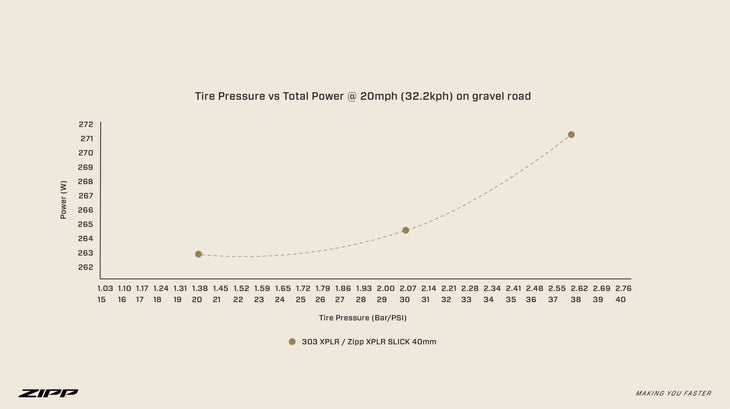
According to Zipp, the other aspect of these wheels is vibration loss. What that means is the amount of power lost to rough riding surfaces. According to Zipp, it’s significant and the brand built a special test track to figure out just how significant. What the team found was that while a drum test is an effective tire comparison, it always benefits from higher pressure and isn’t an accurate representation of real life.
When testing for vibration loss on a rough track, Zipp was seeing 60-100 watts of lost power at speeds of 15-20 mph. Anyone who’s spent much time riding gravel will know that there’s a definite loss in power over rough surfaces but those numbers are still somewhat shocking.
If you are reading this and thinking Zipp merely proved the obvious, I’d agree. You need suspension to go faster on rough surfaces and tires are the most common form of suspension.
Still, the team was able to put numbers to the feeling. The numbers show not only the drastic loss of power but also just how low you can drop your tire pressure before it’s slower.
Then, with numbers in hand, the team solved the problem in a novel way. A wide wheel with a higher air volume and less pressure is hardly a breakthrough product. What Zipp is doing differently is pairing that wheel with gravel bike sized tires and focusing on aerodynamics. It’s something most brands don’t have the resources to even try because of the tire compatibility aspect.
There is also one more aspect of the wheel design Zipp focuses on, pinch flats. With a wheel this big there’s room to widen the sidewall bead interface and make sure it’s blunt. The idea is that if a tire gets trapped between the ground and the wheel it’s less likely to pick up a pair of cuts. Enve, with the launch of the SES wheels, was the first brand I heard mention this design but Zipp has taken it a bit farther with a 3.9 mm side wall.
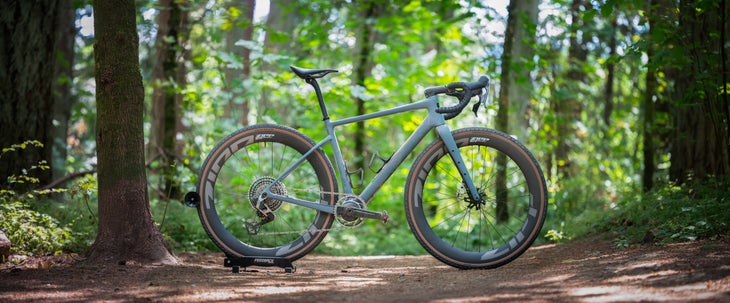
Ride experience
Working through the details of the Zipp 303 XPLR SW wheelset I found myself wanting to yell at the screen how obvious it all was. Zipp spent years building test rigs and testing wheel and tire combos to prove what everyone knows. Wider wheels paired with tires at lower pressure are faster and more comfortable. Then you ride this combo and it really does feel revolutionary.
What drove this point home was an unexpected match up between road and gravel because of a friend without a gravel bike. I needed to test a gravel setup, we wanted to ride together anyway. I was on an Enve MOG with 45 mm tires, he was on a Moots with 28 mm tires, taped up Shimano road shoes, and mid-depth carbon Zipp wheels with Chris King hubs. We had about 100-miles of mixed surface riding on the schedule.
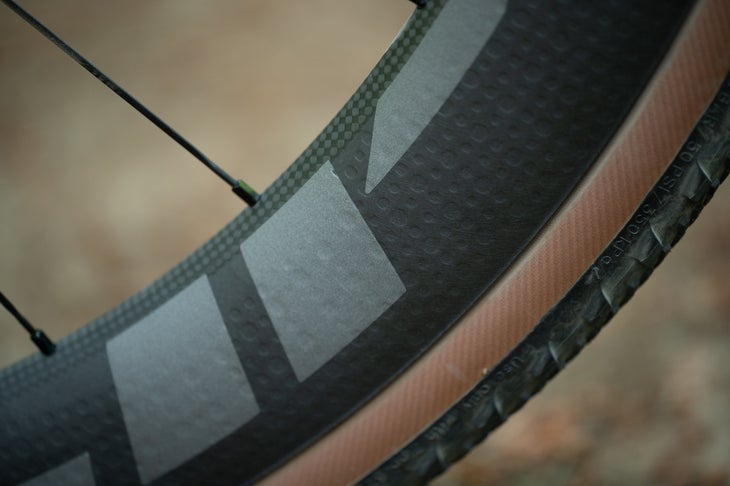
When the road got rough, especially on the descents, I was faster. This is a person with a penchant for underbiking and better bike handling skills than me but that just meant he could cover the route, not that he was fast. I had more control and better braking performance. That’s expected though. In other news, water is wet. The revelation is how fast these wheels were on road descents.
The two of us always enjoy a good aero contest on 100-ish mile rides. We tuck on descents and when I’m inevitably faster with my love of deep wheels and aero bikes, plus shorter stature, he will super tuck and fly past me. All good fun but the Zipp 303 XPLR SW with a 45 mm tire and all-around gravel tires allowed me to pass him over and over.
We were, obviously, not engaged in a scientific study but it caught us both by surprise. Conventional wisdom would say that a road tire with a mid-depth wheel is always going to be aerodynamically faster than a 45 mm gravel tire on a gravel wheel. I think most people would agree that the gravel combo should be so much slower that it’s not even a question of how scientific the test is.
The reality was different and I was contemplating this mismatch while rolling past my buddy. We were descending off the top of a ridge and the Zipp 303 XPLR SW paired with Goodyear XPLR Inter tires (45mm running at 26 psi) was the faster setup. Remember, that’s faster on a road descent. I already discussed how my setup was obviously faster on the logging roads and gravel descents we covered, that part is hardly worth a mention. On a road descent though?
I could go on and try to parse out why exactly the setup was so fast. I could also discuss off-road performance and comfort. None of those details matter all that much. There are a lot of capable gravel wheels, the story of these wheels is how fast they are even in situations you don’t think they should be.
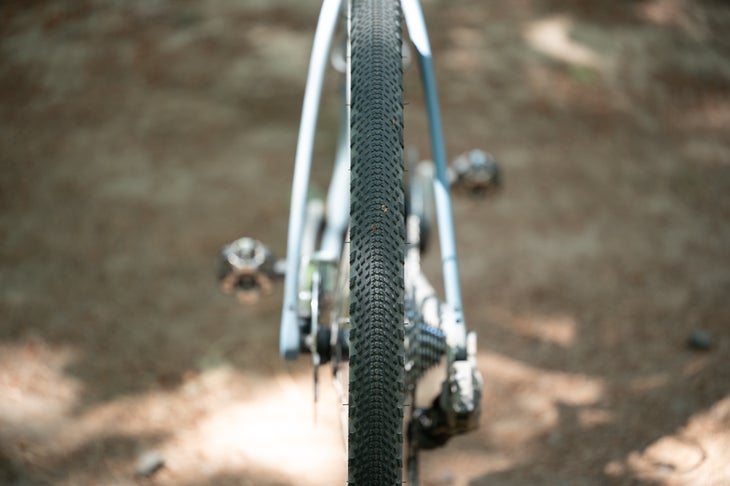
Conclusion
The Zipp 303 XPLR isn’t going to be for everyone. There are people who will complain about the limited tire choice and people who want an ultralight wheel. Both are reasonable but I want a comfortable, stable, fast wheel and the Zipp tires are all I am ever going to need. If I’m wrong, I also love Schwalbe and the G-One tires I normally use are on the approved list.
When the Zipp 303 XPLR SW wheelset came to me I weighed them and took pictures of the inside and the hub. I knew then that these were the right wheels for me. I also knew right away that Zipp was setting a new standard. A 54 mm deep, 1500 gram wheel with a 32/40 mm internal/external width is unheard of. There are lighter wheels but nothing is that wide and that light. When it was time to actually ride them, my opinion only got more favorable.
I like to push myself and I want my equipment to get out of my way. I find it frustrating when a gravel wheel and tire feels like a compromise on the road and I hate having to think about what the right tire is for a specific situation. Paired with an Enve MOG, the Zipp 303 XPLR SW is so capable that I can do anything I want. If you ride like me, this is the new standard bearer for gravel performance wheels.
Gallery
